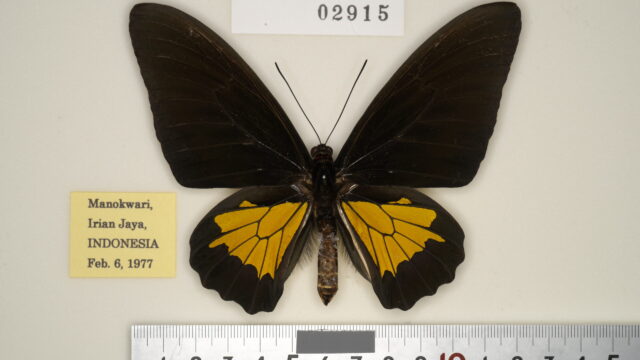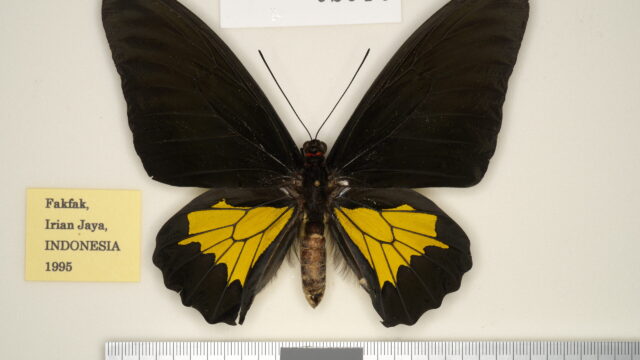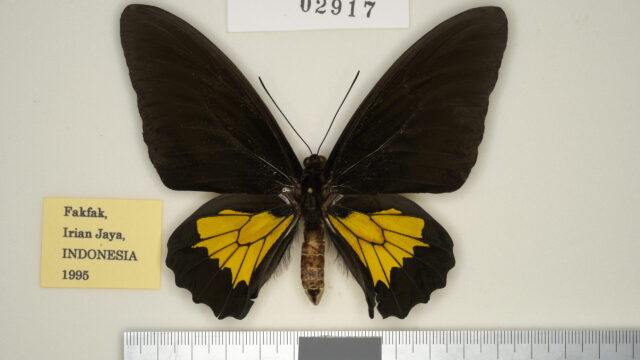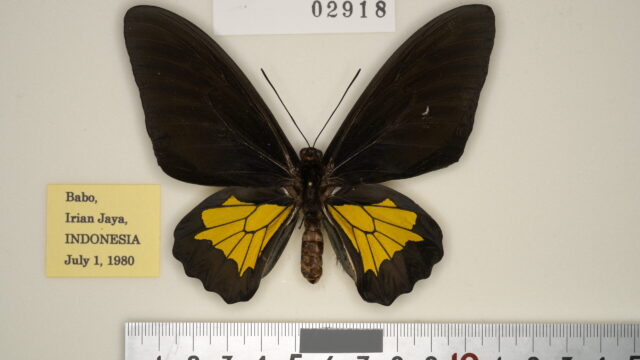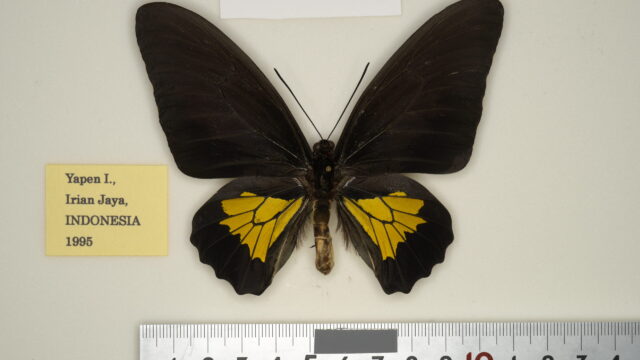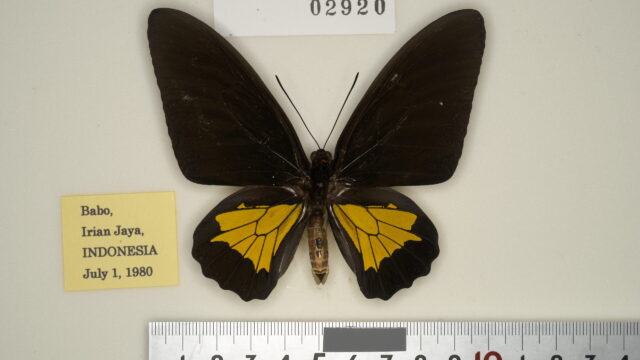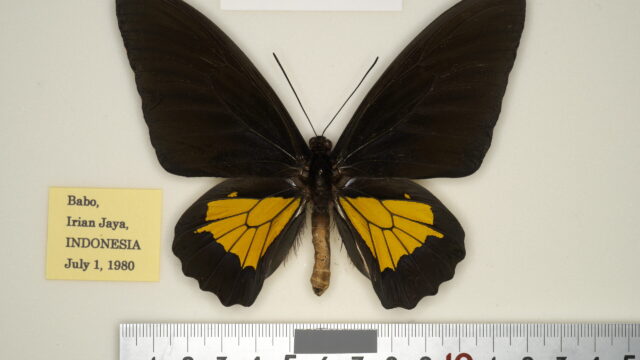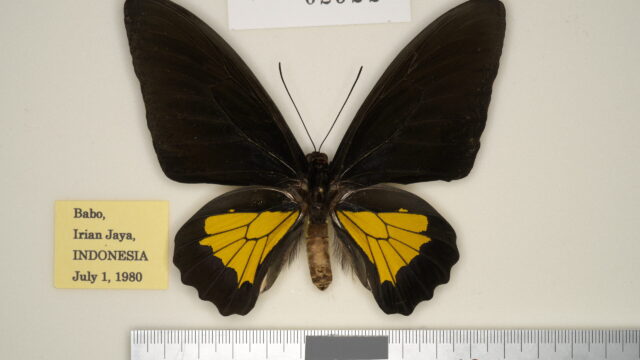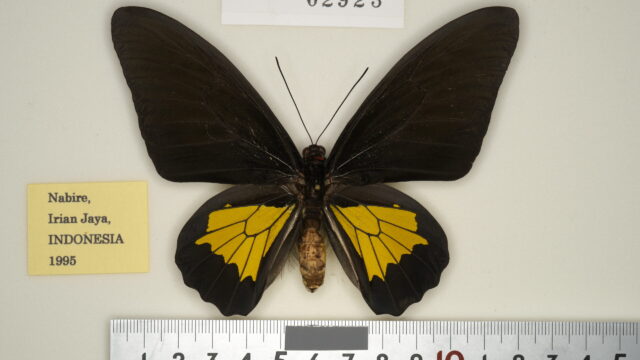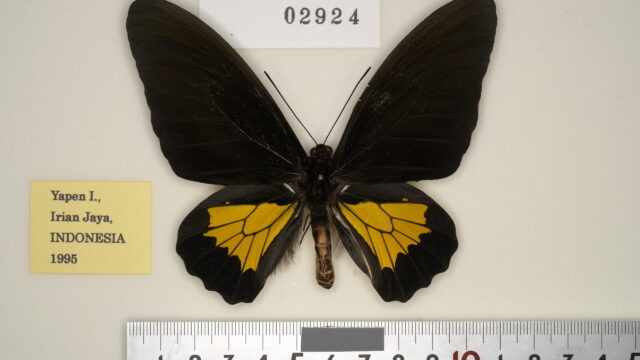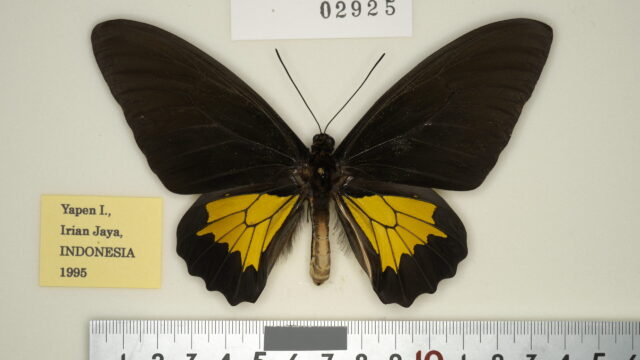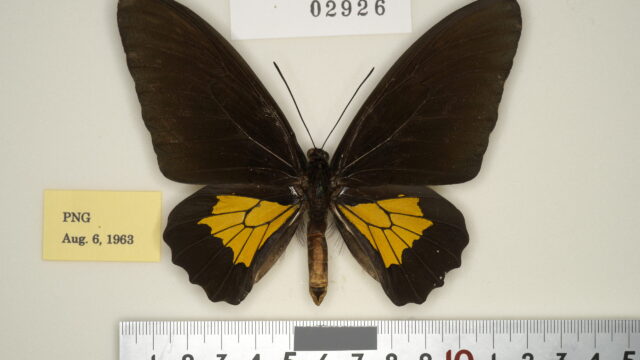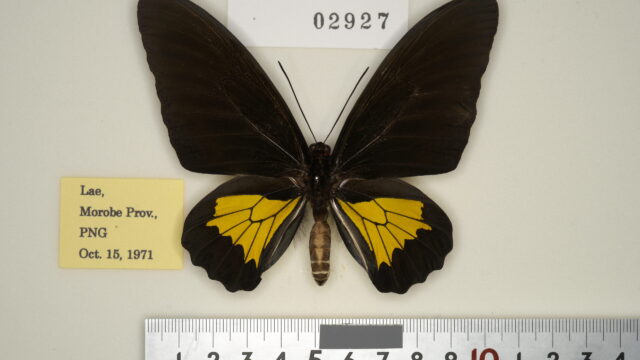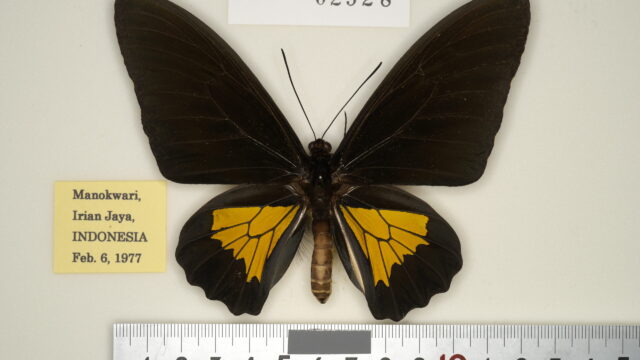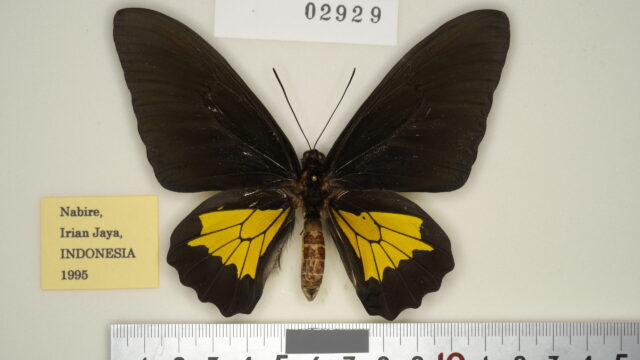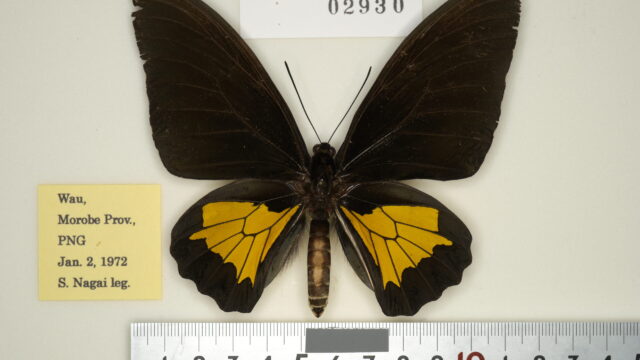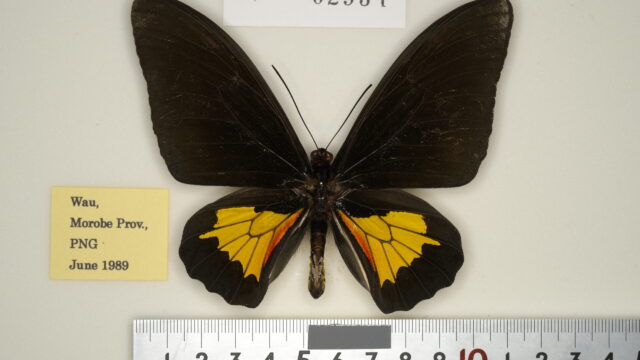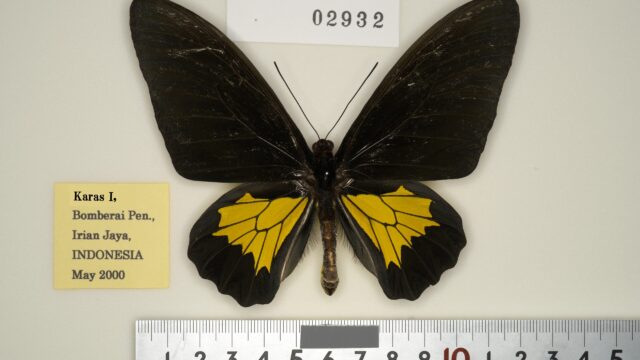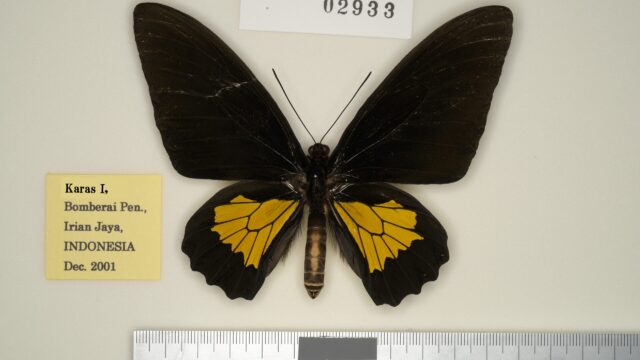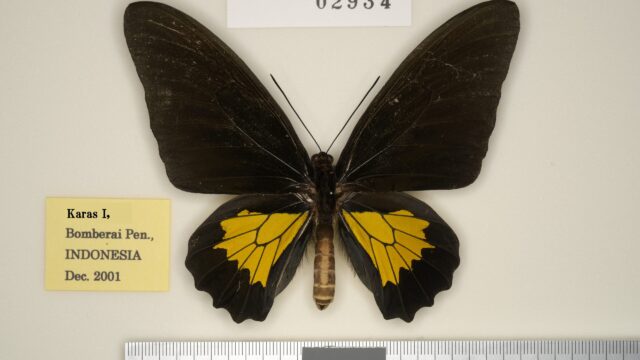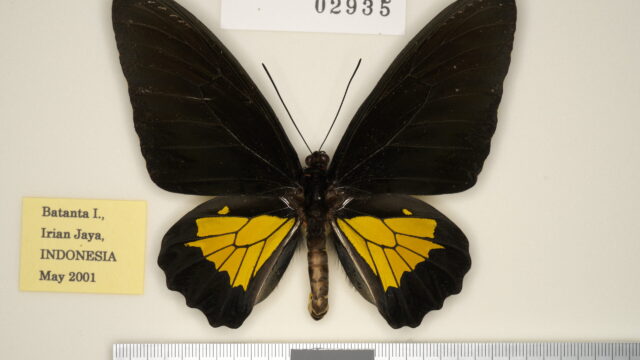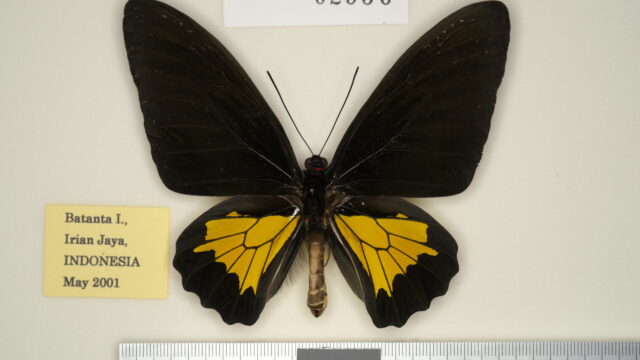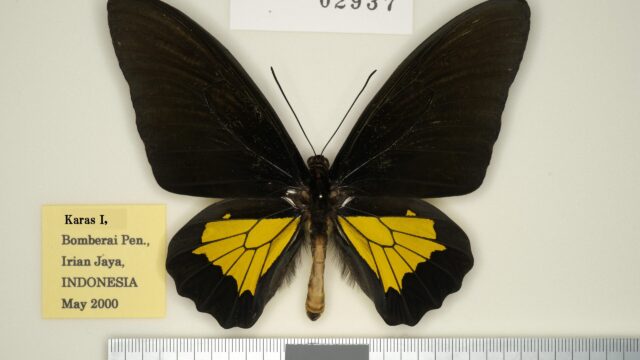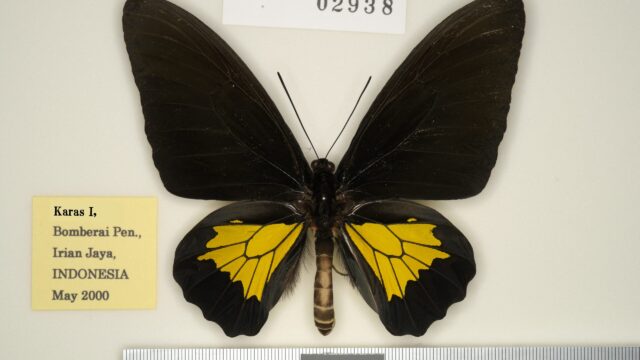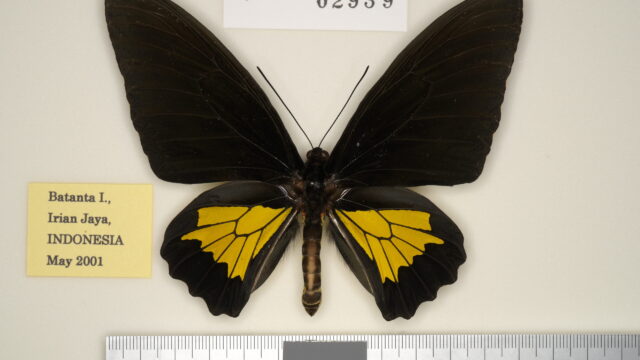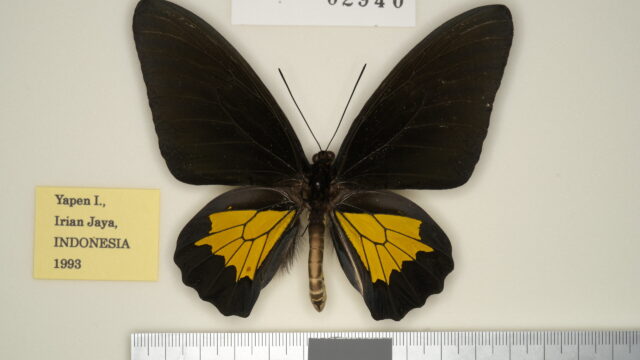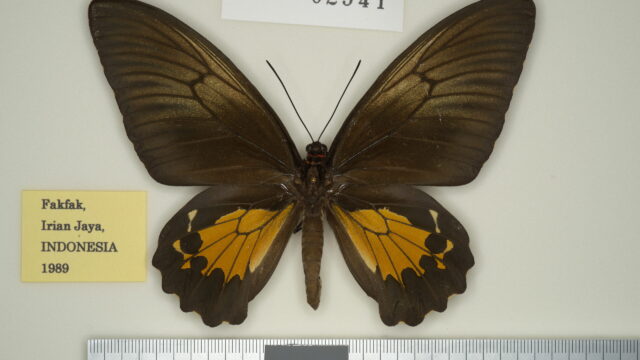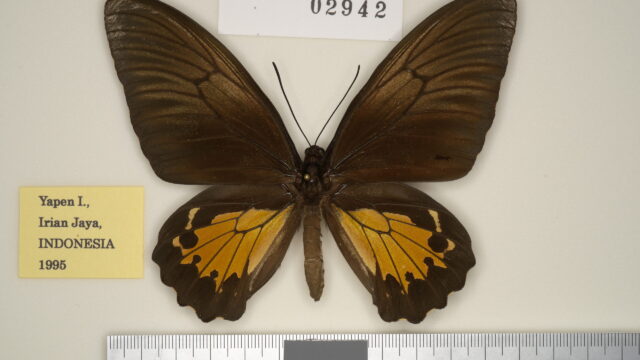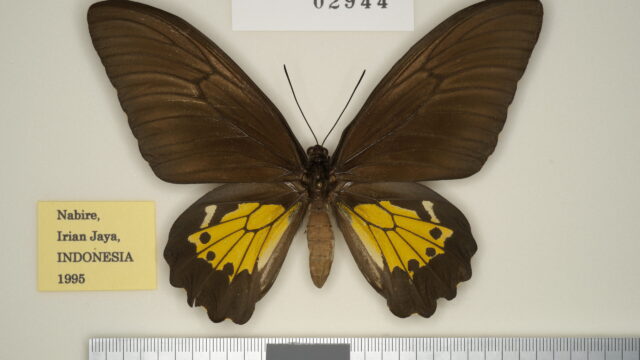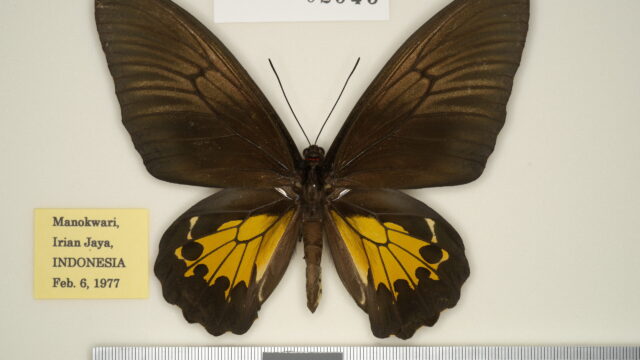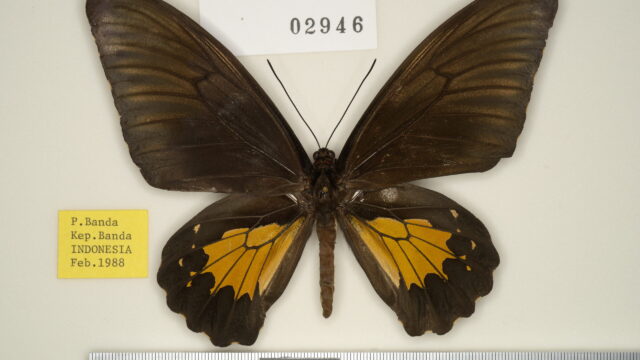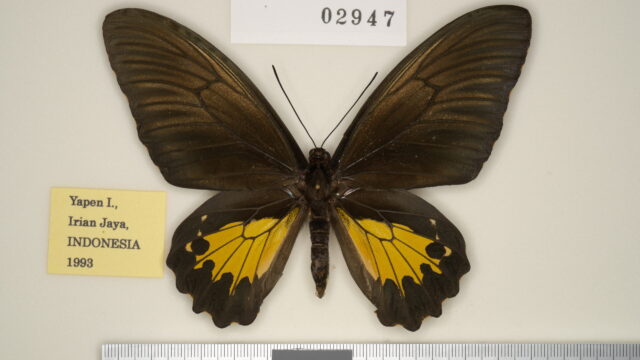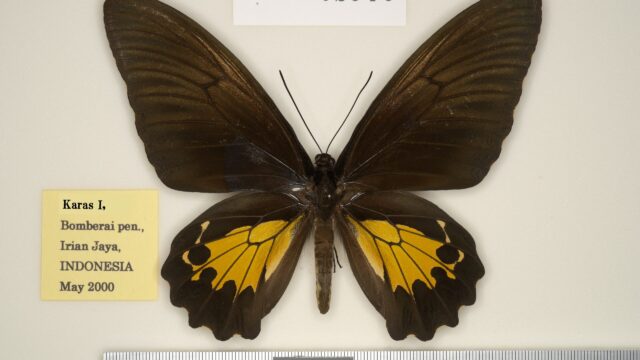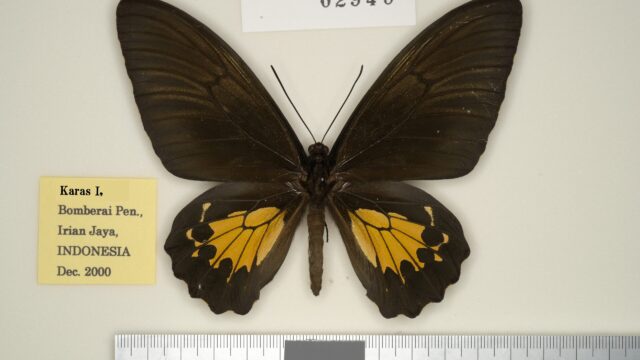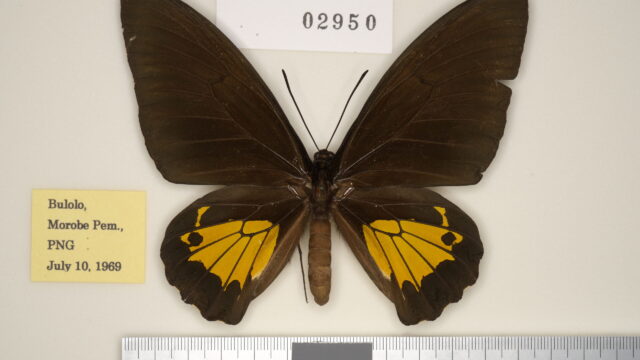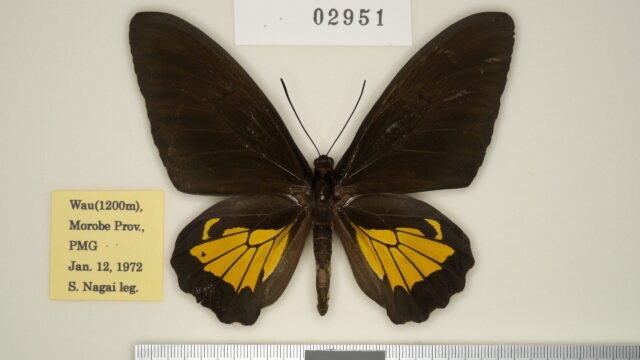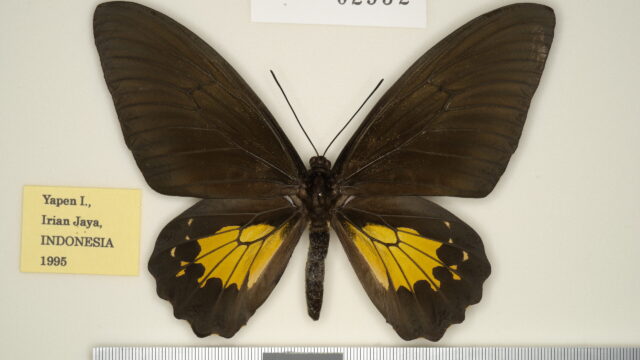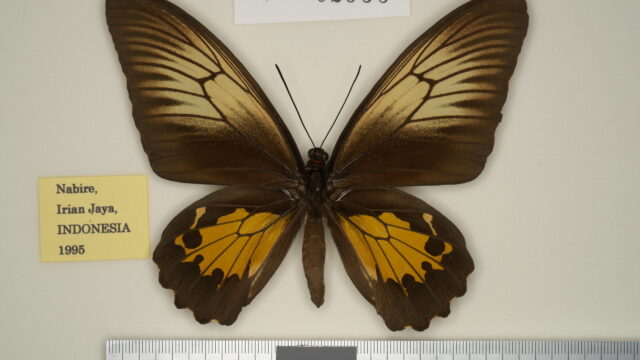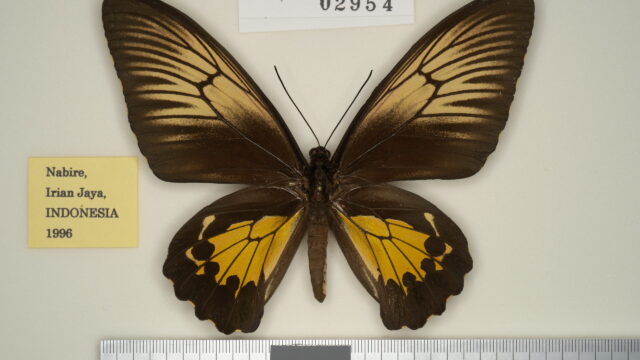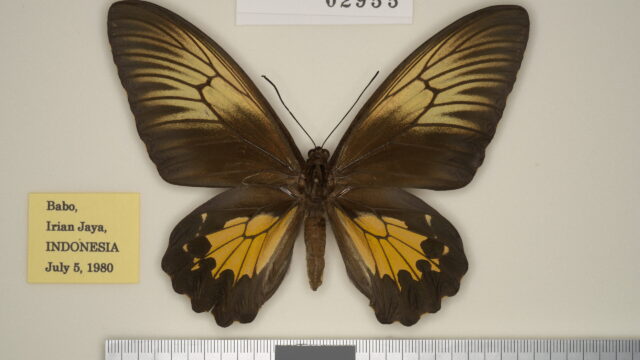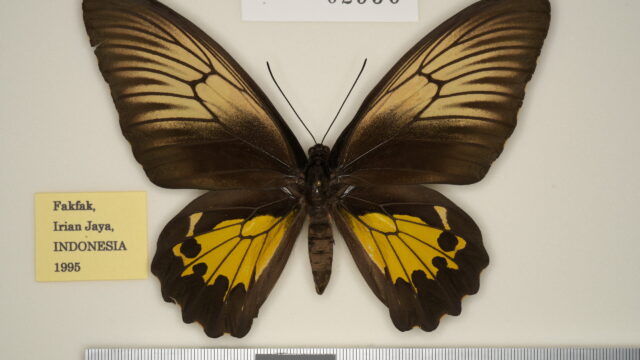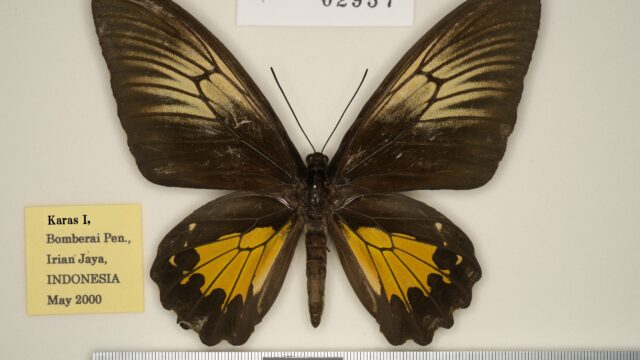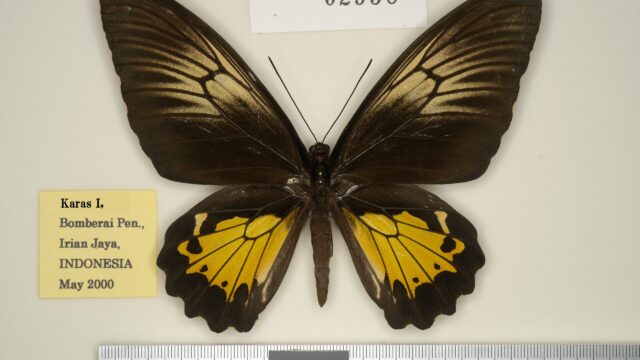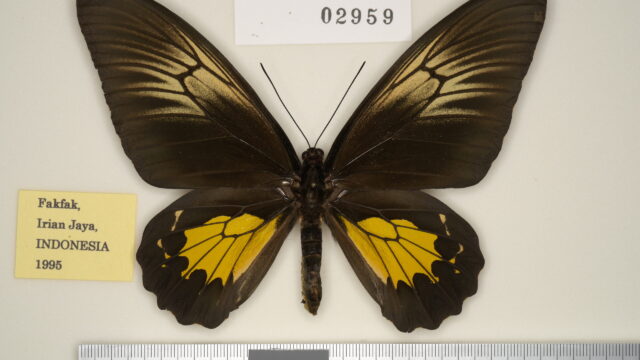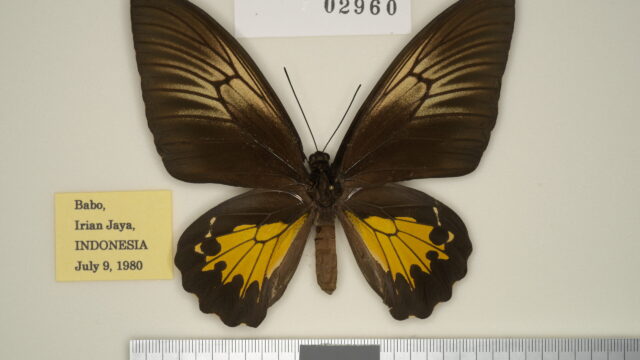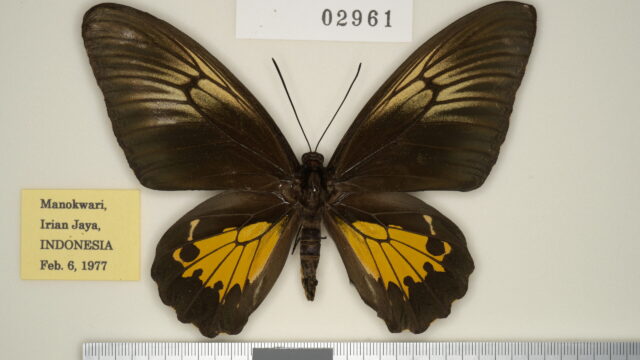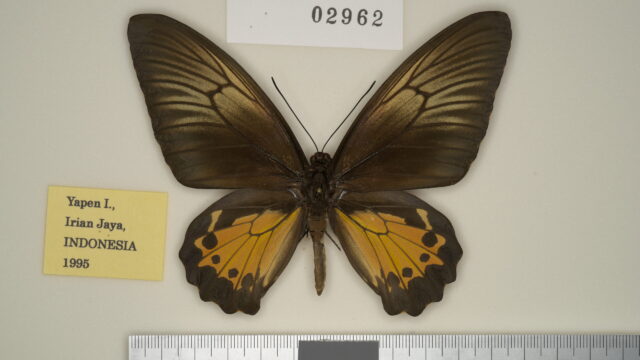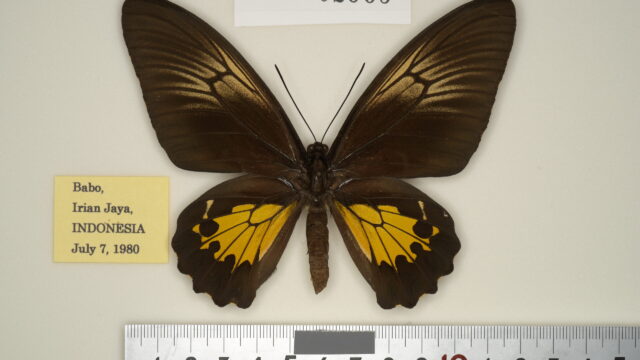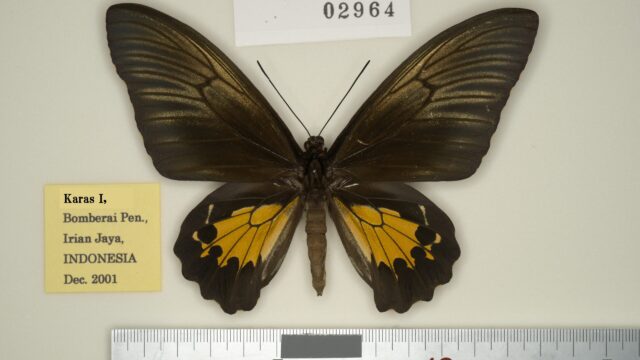- Ssp. papuensis (Wallace, 1865) 34) [♀] [♂: hellen (Boisduval, 1832)1)] (♀: 2 forms)
=hellen (Boisduval, 1832)1) [♂] (➡bouruensis )
=melpomona (Rippon, 1892)25) [♂, ♀] (New Guinea)
=ilonae Schäffler, 199930) [♂, ♀] (Yapen Is.)
(Distribution) [Map 143]
INDONESIA [Irian Jaya] Kofiau Is., Batanta Is., Salawati Is., Doberai Peninsula (Sorong, Manokwari, Arfak Mts. area), Onin Peninsula (Fakfak, Panjang Is.), Bomberai Peninsula (Babo, Karas Is.), Etna Bay area, Nabire, Schouten Islands (Supiori Is., Biak Is.), Yapen Is., Timika, Wamena, Merauke; PNG [ESP] Kairiru Is., Mushu Is., Maprik, Wewak, [MgP] Manam Is., Madang, Ileg, [MoP] Markham Valley, Lae, Bulolo, Wau, Garaina, [NP] Waria River basin, Popondetta, [CeP] Port Moresby, Sogeri, [GP] Kerema, Kikori River basin.
(Episodes of discovery and original description)
Boisduval (1832), in his first report of this subspecies, described it as T. helena based on a ♂ from Rawak. Subsequently, van Vollenhoven (1860), based on a ♂ from New Guinea, gave it the name amphimedon. The name now in use is based on the nomenclature of Wallace (1865), who gave it the local form papuensis (after its Papua habitat).
(Characteristics)
The distribution of this subspecies is all over New Guinea and neighboring islands, which is the easternmost limit of not only the subspecies, but also as the genus Troides. Both sexes are small, with only minor differences in spotted pattern, especially ♀-f. papuensis, between the two sexes.
(Spotted pattern)
♂: Both surfaces of FW are black and unmarked. It is characterized by the absence or fine gold spot on the subcostal space of HW. The spot of the space 1b is large and a finger-like projection in space 5 is present.
♀: There are two forms and an intermediate form. HW pale band resembles those of ♂. The dark discal spots are reduced and separated but fused with dark marginal border.
- Dark form (♀-f. papuensis (Wallace, 1865)34)): FW without vein-stripes.
- Light form (♀-f. papuana (Oberthür, 1879)21)) (=melpomona (Rippon, 1892)25)): FW with distinct vein-stripes.
(Variations)
♂-f. carolus (Fruhstorfer, 1897)9): [Aberration FW pattern] Grayish-white vein-stripes are present on both sides of FW from apex to submarginal area and are more distinct on the underside.
♂-f. irregularis (Dannatt, 1897)4): [Aberrant HW patterns] Subcostal spot is absent. The cell-spot and all discal spots are markedly reduced. Melanic form.
♂-f. cellanigra (Rousseau-Decelle, 1935)28): [Aberrant HW pattern] Complete blacking of the cell except for two minute comma-shaped spots at the apex of cell.
♂-f. grosesmithi (Rippon, 1906)25) (=sordius (Joicey & Talbot, 1924)15)): [Aberrant HW pattern] Golden spots on HW reduced, V shaped especially in space 4, three black spots in the cell-apex and an isolated rectangular black spot on the patch in space 5.
♂-f. biroi Horváth & Mocsáry, 190014): [HW discoloration] The color of golden patches is reddish brown instead of yellow.
♀-f. carolus (Fruhstorfer, 1897)9): [Aberrant FW pattern] Same variation as ♂-f. carolus.
♀-f. radiata (Niepelt, 1934)20) (=jennyae Deslisle, 19965)): [Aberrant FW pattern] Extreme type of the light form.
♀-f. obsoleta (Dufrane, 1930)6): [Aberrant HW pattern] Absence of the yellow discal patch on space 6 of HW.
♀-f. obsoleta Rumbucher & Schäffler, 200529): [Aberrant HW pattern] Almost completely disappearance of dark discal spots on HW.
♀-f. rubra Pagenstecher, 190424): [HW discoloration] the color of HW pale band is reddish instead of yellow.
